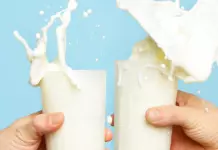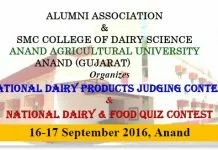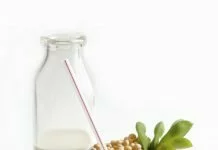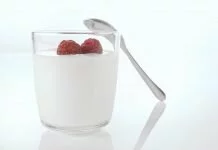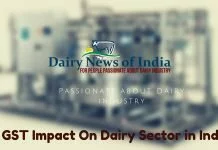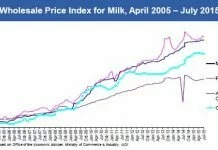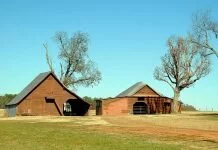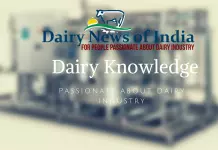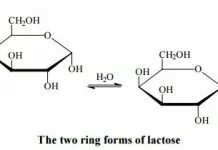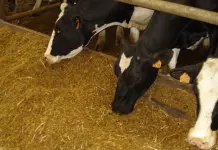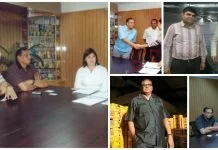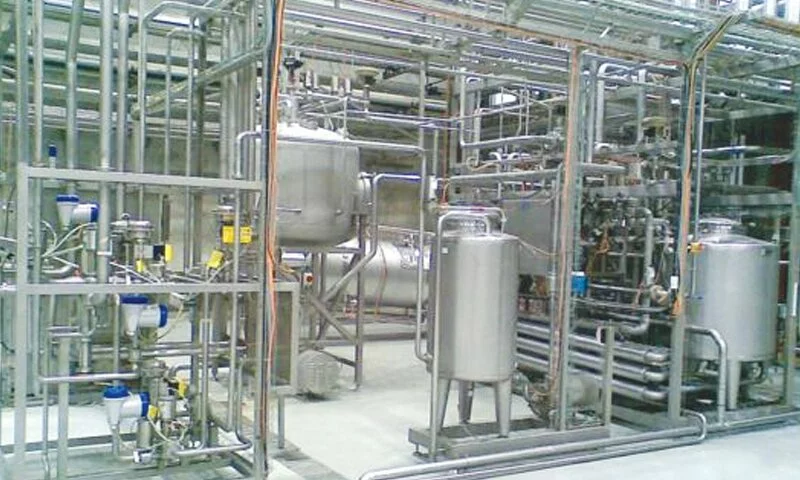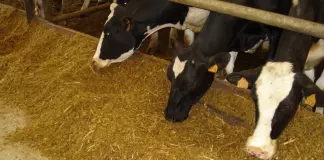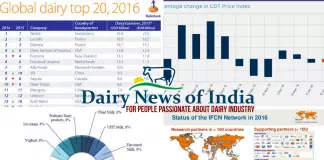ALERT! : ITS SHAMPOO WE DRINK, NOT MILK! SHOCKING REPORTS!
Answer by Rahul Patel, works at Gandhinagar, Gujarat, India
Here I share Shocking news articles about Adulterated Milk? Well that’s not even Milk.
Hello parents! I am going to take an apple and dry it. Then I mash it into ‘apple’ powder. After a few months I add water and chemicals to it, shape it and sell it to you as a fresh pure apple. Will you buy it for your children to eat?
No? Why not? You do it everyday with milk.
The government brings out yearly statistics on fake milk, and even when their own studies done by the Food Safety and Standards Authority of India (FSSAI) show that more than 75% is not milk at all but urea, water, caustic soda, paint, sugar, detergent Hydrogen Peroxide, starch, glucose, salt, Skimmed Milk Powder (SMP) and vegetable fat, they still will take no action on the producers.
Let us presume that you buy government milk packets thinking that the government could not be cheating its own people. But when the government allows corruption in every field, why not milk? Today a major part of the milk in the packets is not the primary product of a cow or buffalo but reconstituted from powder.
Here is a report done by Harish Damodaran, an award winning journalist who has specialized in agri-business and commodities coverage: ‘ Nowhere is this more apparent than in the national Capital itself, where the market leader, Mother Dairy India Ltd, consumes an estimated 20,000 tonnes of skimmed milk powder (SMP) annually or 55 tonnes daily. That translates into six lakh litres per day (LLPD) of milk or roughly 30 per cent of the 20-22 LLPD that Mother Dairy sells on an average in Delhi. The proportion of reconstituted milk to the total throughout rises to 50 % during summer months.’
According to the milk producers, real milk is put aside in the winter months and turned into powder which is then mixed back into the milk whenever real milk runs short – which seems to be everyday.
The Gujarat Cooperative Milk Marketing Federation (GCMMF) and owner of Mother Dairy says that it supplies ‘pure’ milk in the whole of Gujarat, Mumbai, Delhi and Madhya Pradesh (this is disproved for Delhi by the quantity of milk powder being bought). But in areas like West Bengal where all the cows have been killed or sent to Bangladesh (as in Kerala or the Northeast), there is no fresh milk available. There is a limit to the milk that can be sent by rail from Gujarat to Kolkata (and this milk will have chemicals like urea added to it so that it does not curdle on the way) so a large proportion of the so called pure milk has to be reconstituted milk.
Even in the states where there is milk, milk powder is added by private cooperatives and dairies. Why is this done? The Prevention of Food Adulteration rules stipulate a minimum 8.5 % Solids-Not-Fat (SNF) content for toned milk and 9 per cent in double-toned milk. If a dairy adds water then, to bring up the milk to the regulation standard, skimmed milk powder is added.
According to the government, Delhi, Uttar Pradesh, Punjab, Rajasthan and Haryana have crores of milk producing cattle and are the top milk producers of the country. So why is most of the milk here either completely fake or made of milk powder? Could it be that the government is simply faking cattle figures? There is no real milk, because there are no cows or buffaloes. They have all disappeared into illegal meat and leather slaughterhouses.
Why is milk not being labelled as ‘reconstituted’. Why is it still allowed to be called pure? In every other country including China, all dairy companies that are marketing reconstituted milk have to put this on their label. If this were done in India, there would be a sharp fall in the sale, and milk consumers would then demand fresh milk themselves. This would impact the illegal meat export that the government encourages. Therefore. the Ministry for Consumer Affairs will not do so.
Just to remind you: The National Survey on Milk Adulteration 2011 was conducted to check contaminants in milk throughout India. Most states failed the tests. Five states were found to be 100 % non-conforming to the milk standards set by the FSSAI. 14 % of the samples had detergent in them – in Jharkhand, Bihar, West Bengal and Odisha. 70% of Delhi milk samples failed the FSSAI standards.
46% milk was found diluted with water. Of 1791 samples, skimmed milk powder was present in nearly 548 samples and 477 samples contained glucose.
The report appeared on January 10th 2013. The FSSAI were summoned and told to repair the damage they had done by releasing these shocking truths. So they are now busy issuing ‘clarifications.’
First they issued a press release stating that ‘non conforming’ did not mean that it was ‘unsafe for consumption’. The milk may be of ‘sub standard’ quality but ‘not necessarily’ unsafe. In short: The milk may be rubbish but not everyone dies from drinking it so it can continue to be sold. The FSSAI officials have clarified that adding water to milk is only bad if ‘the water which has possibly been added is contaminated.’ So, it is not bad to cheat the customer by adding water to an expensive product which is sold by weight – it is OK if the adulterant is clean.
Regarding reconstituted milk made from skimmed milk powder, instead of banning the practice, the FSSAI has said that a circular will be issued to big dairy houses to brand the milk right. The circular has not been issued till today.
Regarding the presence of formalin or formaldehyde, (a chemical used for preserving dead bodies and to increase the shelf life of milk when it is being transported), it is illegal in food and is a carcinogen. The FSSAI says ‘That is allowed for preservation. Maybe where we detected it they must have put it in larger quantities.’
Regarding the detergents found in milk, the FSSAI says that this is because the handlers of milk have not washed out the detergents, used to clean hands and vessels. before handling the milk! It is a known fact that detergent is used to make synthetic milk to increase the thickness and viscosity of the milk. A study done by the Indian Council of Medical Research states that detergents in milk cause food poisoning and gastrointestinal complications.
Now the FSSAI says it can’t do anything about making milk pure- it has to be done by the states. The states refuse to take any action saying that they have not seen the report (which was published on the front page of every paper across India). Bihar’s milk was found to be 100% contaminated but the state Food Safety Authority maintains that ‘We have no idea where they collected the samples from. Once the report is shared with us, we will collect the samples, test it in our labs and then take appropriate action on whether the license has to be revoked or not.’ This is six months after the report. (In any case the department has only 23 officers to man the food quality of the entire state.)
The Delhi Food Safety Authority has the same reaction. They agree that ‘The samples were found to contain skimmed milk powder. But this is not hazardous to health, its just reconstituted milk.’ Delhi has an estimated daily demand of 70 lakh liters of milk, about 90% is supplied by brands. Neutralisers like Sodium Hydroxide, Potassium Hydroxide, Ammonia, Carbon Trioxide (carbonate) and other alkalis are used to correct and optimise the pH value of un-fresh milk so that they appear to be fresh milk. Obviously they would be a necessary component in reconstituted milk, which is what 50% of Delhi’s milk is in summer.
The FSSAI refuses to send their report officially to any state or even to the Indian Dairy Association! So the states have an excuse to ignore it. Even if they got them, most of the state testing laboratories are either defunct or ill equipped.
This belief that we are the world’s number one milk producer is misplaced. We are the number one fake milk producer in the world. And the only way you can stop this and protect your children is by totally stopping the purchase of this dangerous product.
– by Menaka Gandhi – www.mathrubhumi.com
Another Article from Reuters
Indians may think twice before gulping down a glass of milk after the country’s food safety regulator found most samples collected in a survey were either diluted or adulterated with products including fertilizer, bleach and detergent.
The study, conducted this month by the food safety and standards authority of India, found milk was adulterated with skimmed milk powder and glucose, or more shockingly hydrogen peroxide, urea and detergent.
Hydrogen peroxide is used in bleach, while urea is commonly used in fertilizer.
“Consumption of milk with detergent may cause health hazards and indicates lack of hygiene and sanitation in the milk handling,” the regulator said in a report.
“Addition of water not only reduces the nutritional value of milk but contaminated water may also pose health risks.”
A health ministry official declined to comment on the report.
India has long struggled with adulteration of food and milk by unscrupulous traders. Almost 70 percent of the 1,791 samples taken nationwide were contaminated or watered down, according to the report.
Out of 33 Indian states, non-fat adulterants were found in all the milk samples from West Bengal, Orissa and Jharkhand. This adds to concern about West Bengal’s faltering health and safety standards. In December, an adulterated batch of bootleg liquor killed at least 125 drinkers in the eastern state.
The deaths came a few days after a hospital fire killed 93 people in the state’s capital Kolkata.
New Delhi fared worse than most states, with as many as 70 percent of the samples tainted. The western state of Goa and eastern state of Puducherry conformed to the standards, with no indication of adulteration in their milk.
– By Annie Banerji




